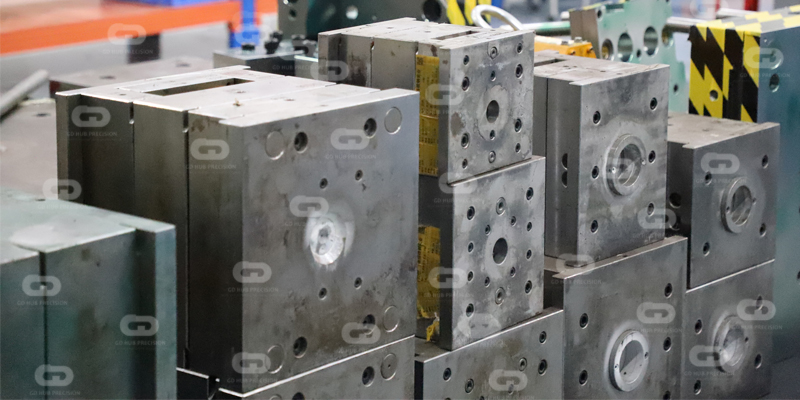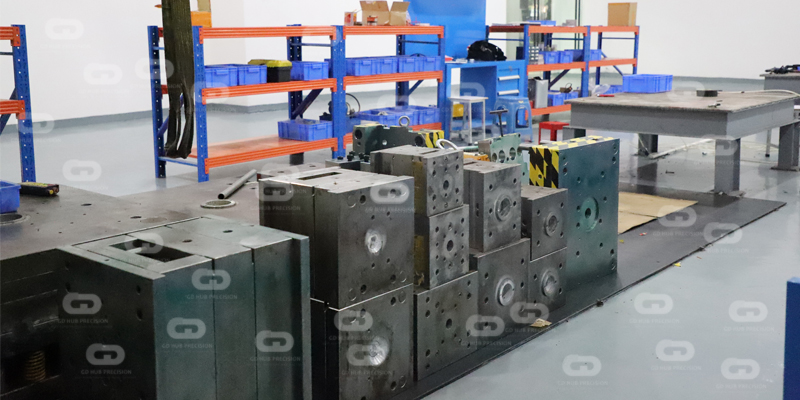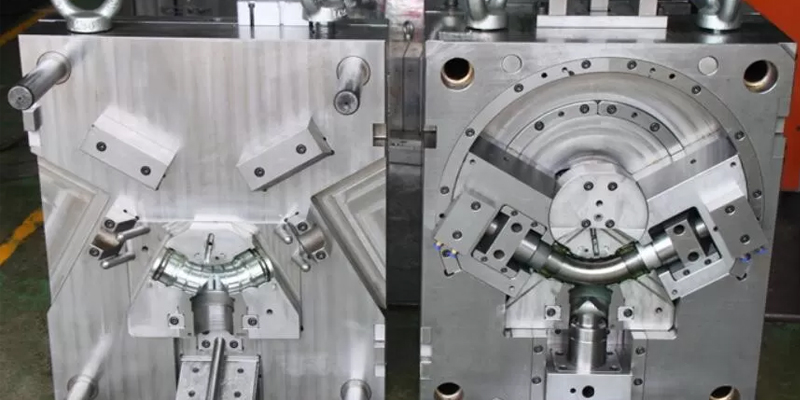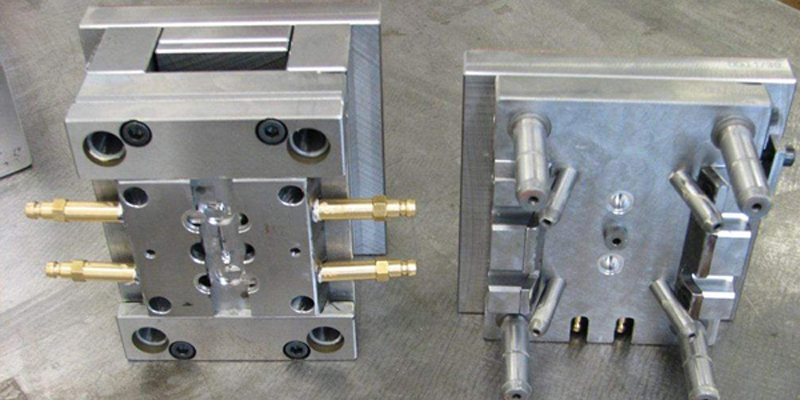1. What is Rapid Tooling:
Rapid tooling services refer to the processes and techniques used to quickly create tooling, such as molds, dies, jigs, or fixtures, for use in various manufacturing processes, that are required for the manufacturing of parts or products. These services are especially valuable in industries where there is a need for fast turnaround times, such as prototyping, low-volume production, or product development. Rapid tooling can significantly reduce lead times and costs compared to traditional tooling methods while still maintaining a reasonable level of quality and functionality. Rapid tooling is especially useful in scenarios where there is a need for fast prototyping, low-volume production, or rapid product development cycles.
2. Rapid tooling services include:

Rapid Prototyping: Techniques like 3D printing, stereolithography (SLA), and selective laser sintering (SLS) can be used to quickly create prototype tooling components or patterns for molds and dies.
CNC Machining: Computer Numerical Control (CNC) machining can be used to create tooling components with precision and speed. It's particularly useful for producing molds and dies from materials like aluminum or steel.
Aluminum Tooling: Aluminum is a popular material choice for rapid tooling due to its relatively low cost and machinability. It can be used to create molds for injection molding and other processes.
Soft Tooling: Soft tooling refers to using materials like silicone or urethane to create molds, which are less durable than steel but can be produced quickly for low-volume production runs or prototyping.
Rapid Injection Molding: This process involves creating molds for injection molding in a shorter time frame compared to traditional steel molds. It's often used for producing small quantities of parts.
Die Casting Tooling: Rapid tooling can be applied to die casting processes, such as creating rapid die inserts or mold cavities for casting metal parts.
Hybrid Tooling: Combining various rapid tooling techniques to achieve the desired results. For example, using 3D printing to create mold patterns and CNC machining to finish the mold.
Direct Metal Laser Sintering (DMLS): DMLS is a 3D printing technique that can create metal parts and tooling components with high precision. It's suitable for small-scale production of metal tooling.
Vacuum Casting: Used for creating low-volume, rapid tooling for silicone molds, which are often used for producing small batches of prototypes or parts.
Additive Manufacturing for Tool Inserts: 3D printing or additive manufacturing techniques can be employed to create inserts or components for existing molds, allowing for rapid adjustments and modifications.
Conformal Cooling: The use of 3D printing or other rapid techniques to create complex, conformal cooling channels within molds to improve the efficiency of the molding process.
3. Benefits and Advantages of Rapid Tooling:

Rapid tooling particularly in product development and low-volume production scenarios.
Reduced Lead Times: Rapid tooling significantly shortens the time required to produce tooling compared to traditional methods. This rapid turnaround allows for quicker product development, prototyping, and time-to-market, which is especially critical in industries with fast-changing market demands.
Cost Savings: By using faster and more cost-effective techniques and materials, rapid tooling can lead to substantial cost savings, especially for low to medium production volumes. It minimizes the upfront investment typically associated with traditional tooling.
Flexibility and Customization: Rapid tooling methods allow for greater flexibility and customization. Tooling can be quickly modified or adapted to accommodate design changes or specific project requirements. This adaptability is crucial for agile manufacturing.
Prototyping: Rapid tooling facilitates the creation of prototypes using production-grade materials. This means that prototypes closely resemble final production parts, allowing for more accurate testing and validation of designs before committing to full-scale production.
Iterative Design: The speed and cost-effectiveness of rapid tooling enable designers and engineers to iterate on product designs rapidly. This iterative approach can lead to better end products by identifying and addressing design flaws and improvements early in the development process.
Low-Volume Production: Rapid tooling is well-suited for low to medium production volumes, making it a cost-effective option for manufacturing small batches of parts or products without the need for expensive, high-volume tooling.
Complex Geometries: Advanced rapid tooling techniques, such as 3D printing, can produce tooling with complex geometries that may be challenging or impossible to achieve with traditional tooling methods. This is especially valuable in industries like aerospace and medical devices.
Reduced Waste: The efficient use of materials in rapid tooling processes can result in less waste compared to traditional methods, contributing to sustainability and environmental benefits.
Market Testing: Rapid tooling allows companies to quickly bring new products to market and gauge customer response. This can help in making informed decisions about further investments in tooling and production.
Risk Mitigation: With shorter lead times and lower upfront costs, rapid tooling reduces the financial risk associated with tooling development. It allows companies to test ideas and concepts with minimal initial investment.
Short-Run Manufacturing: Rapid tooling is an excellent solution for short-run manufacturing, where traditional tooling would be impractical or cost-prohibitive.
Bridge Tooling: It can be used as a bridge between prototype development and full-scale production, helping companies transition from initial prototypes to production-ready tooling when demand increases.
4. Disadvantages of Rapid Tooling
Limited Tool Life: Rapid tooling materials, such as aluminum or soft tooling materials like silicone, typically have shorter tool lives compared to traditional tooling made from steel or other durable materials.
Material Limitations: The choice of materials for rapid tooling can be limited compared to traditional tooling methods. Some specialized materials may not be suitable for rapid tooling, which can restrict the range of applications.
Surface Finish: Parts produced using rapid tooling methods may have rougher surface finishes compared to those made with traditional tooling. Additional finishing processes may be required to achieve the desired surface quality.
Tolerance and Precision: Although rapid tooling can achieve high levels of precision, it may not always match the tight tolerances achievable with traditional tooling methods, which can be a limitation for certain industries and applications.
Limited to Low to Medium Volumes: Rapid tooling is most suitable for low to medium production volumes. For very high-volume production, the cost-effectiveness and tool life of traditional tooling methods may be more favorable.
Complex Geometry Trade-offs: While rapid tooling is excellent for producing parts with complex geometries, it may come at the expense of tool life and production speed. Complex molds can wear out more quickly and may require more maintenance.
Material Compatibility: Rapid tooling materials must be compatible with the materials being processed. Incompatibility can lead to issues such as mold degradation or material contamination.
Environmental Considerations: Some rapid tooling materials and processes may have environmental implications. For example, the disposal of certain tooling materials can be less environmentally friendly than traditional tooling materials.
Quality Assurance: Maintaining consistent part quality can be more challenging with rapid tooling due to the potential for shorter tool life and increased wear.
Size Limitations: Depending on the specific rapid tooling technique used, there may be limitations on the size of parts or molds that can be produced, which can be a disadvantage for larger components.
5. Commonly materials for Rapid Tooling
Aluminum: Aluminum is a popular choice for rapid tooling, especially for injection molds, because it's relatively easy to machine and offers good thermal conductivity. It is suitable for producing small to medium production runs. Aluminum tooling can be used for prototype development and low-volume production.

Steel: While not as rapid as aluminum, steel tooling is durable and capable of withstanding high temperatures and pressures. Tool steels like P20, H13, and S7 are commonly used for rapid tooling applications that require higher production volumes and more extended tool life.

Copper: Copper is known for its excellent thermal conductivity, making it suitable for applications where precise temperature control is essential, such as injection molding. Copper tooling is often used for prototyping and low- to medium-volume production.
Soft Tooling Materials: For short-run or prototype tooling, soft materials like silicone and urethane are used to create molds. These materials are quick and easy to work with, but they are not as durable as metal tooling and may require more frequent replacement.
3D Printable Metals: Some 3D printable metals, such as tool steel powders, can be used in additive manufacturing (3D printing) processes to create tooling components. This allows for complex geometries and quick iterations, making it suitable for rapid prototyping.
Thermoplastic Composites: In some cases, thermoplastic composites can be used to create tooling components, particularly for applications where a lightweight yet durable material is required. These composites are suitable for low to medium production volumes.
Hybrid Materials: Hybrid tooling can be created by combining different materials and processes, such as using 3D-printed patterns and inserts within a traditional metal mold base. This approach can offer a balance between speed, durability, and complexity.
Epoxy Tooling Board: Epoxy tooling board is a low-cost material often used for creating patterns, molds, and prototypes. It's easy to shape and machine, making it suitable for rapid tooling projects with low to medium production volumes.
Renewable Materials: Bio-based resins and composites.
6. Some common materials that can be processed using rapid tooling methods:
Plastics and Polymers:
Thermoplastics: Many rapid tooling processes, including injection molding, can work with a wide range of thermoplastics, such as ABS, PVC, polyethylene, polypropylene, and polycarbonate.
Thermosetting Plastics: Materials like epoxy and phenolic resins can be used for certain rapid tooling applications, particularly in composite manufacturing.
Silicone Rubber: Silicone is often used for creating flexible molds, especially for casting processes like urethane casting or resin casting.
Metals:
Aluminum: Aluminum is a common material for rapid tooling, especially for creating molds and dies. It's lightweight, has good thermal conductivity, and is relatively easy to machine.
Steel: Tool steel materials like P20, H13, and S7 are used for more durable rapid tooling applications, especially for higher production volumes.
Copper: Copper is chosen for applications that require excellent thermal conductivity, such as injection molding.
Composites:
Carbon Fiber: Rapid tooling can be used to create molds for composite parts, including carbon fiber-reinforced composites used in aerospace and automotive industries.
Fiberglass: Fiberglass molds are commonly produced using rapid tooling methods for composite manufacturing.
Ceramics:
Certain rapid tooling techniques, such as 3D printing with ceramic materials, can be used to create tooling for ceramic parts and components.
Rubbers and Elastomers:
Polyurethane: Polyurethane rubber can be processed using rapid tooling for applications where flexibility and durability are required.
Silicone: Silicone rubber is often used for creating molds for casting flexible parts or prototypes.
Foams:
Polyurethane Foam: Rapid tooling can create molds for polyurethane foam parts, which are used in various industries, including automotive and furniture.
Renewable or Biodegradable Materials:
In environmentally conscious industries, there is an interest in using renewable or biodegradable materials for certain rapid tooling applications. These materials include bio-based resins and composites.
3D Printable Materials:
Through a variety of 3D printing technologies can process a wide range of materials, including various plastics, metals, ceramics, and even some composites.
7. Rapid Tooling Application
Rapid tooling has a wide range of applications across various industries due to its ability to quickly produce tooling components like molds, dies, and fixtures.
Prototyping and Product Development:
Rapid tooling is extensively used for creating molds and dies to produce prototype parts quickly. This enables design validation and iterations before committing to full-scale production.
Low-Volume Production:
Rapid tooling is ideal for manufacturing low to medium quantities of parts where traditional tooling would be cost-prohibitive or time-consuming. This is particularly valuable for niche or customized products.
Bridge Tooling:
It serves as a bridge between prototype development and full-scale production. When transitioning from prototyping to production, rapid tooling can be used to create interim tooling solutions.
Custom and Complex Parts:
Rapid tooling is well-suited for producing custom or highly complex parts with intricate geometries, including those with undercuts and internal features.
The medical industry often utilizes rapid tooling for producing prototypes and low-volume runs of medical devices and components, including surgical instruments and implantable devices.
The aerospace industry benefits from rapid tooling for manufacturing complex parts, including components for aircraft interiors, avionics, and structural elements.
Rapid tooling is used to produce automotive components, including interior parts, exterior trim, and specialty components for concept cars.
Consumer Electronics:
The consumer electronics industry relies on rapid tooling for creating prototypes and small batches of electronic device components, housings, and connectors.
Consumer Goods:
Manufacturers of consumer goods, such as appliances, toys, and household items, use rapid tooling to develop and produce prototypes and short production runs.
Footwear:
The footwear industry leverages rapid tooling to create molds for shoe soles, insoles, and customized orthopedic inserts.
Packaging:
Rapid tooling is used to create molds for packaging materials, including blister packs, clamshell packaging, and custom containers.
Dental and Orthodontic Appliances:
The dental industry relies on rapid tooling for producing molds and dies used to manufacture dental appliances like crowns, bridges, and orthodontic devices.
Jewelry Manufacturing:
Jewelry designers and manufacturers use rapid tooling to create molds for casting intricate jewelry pieces.
Sporting Goods:
Sporting goods manufacturers can produce molds for various sports equipment, such as bicycle components, golf club heads, and protective gear.
The versatility and speed of rapid tooling make it a valuable solution for a wide range of industries and applications, enabling faster product development, cost-effective low-volume production, and the production of complex and customized components.
Consult GD-HUB for your Rapid Tooling Solution.